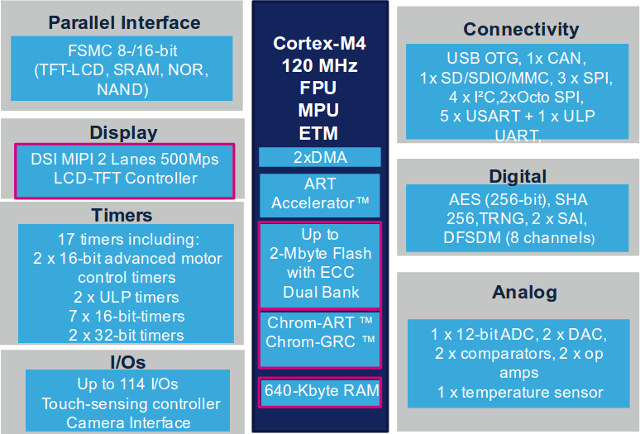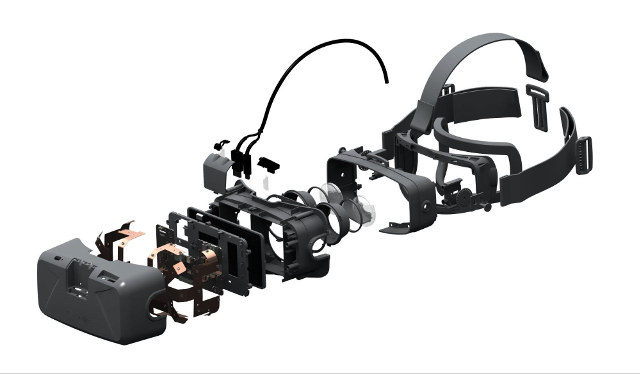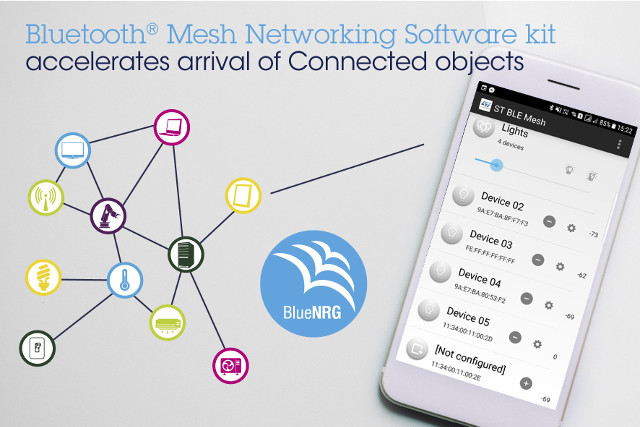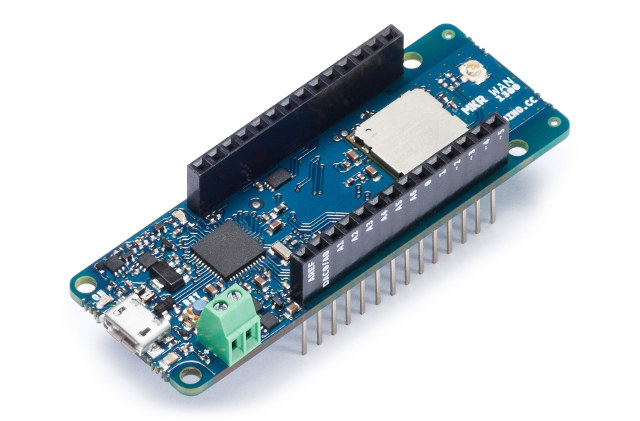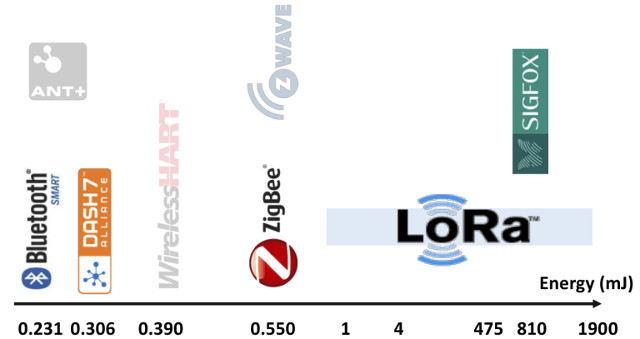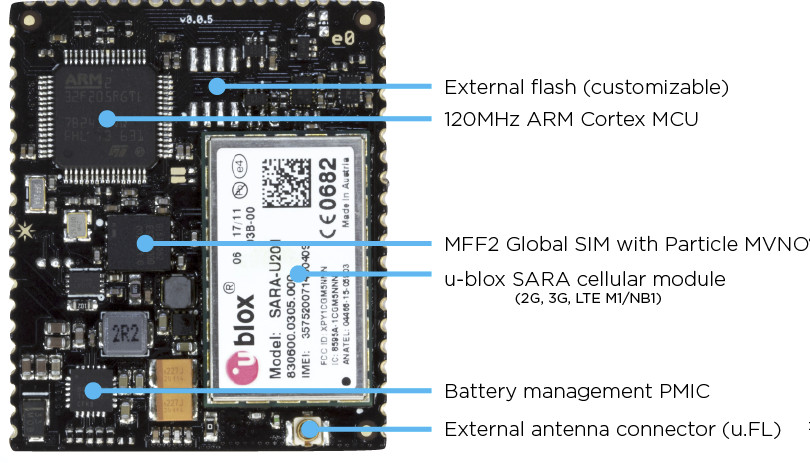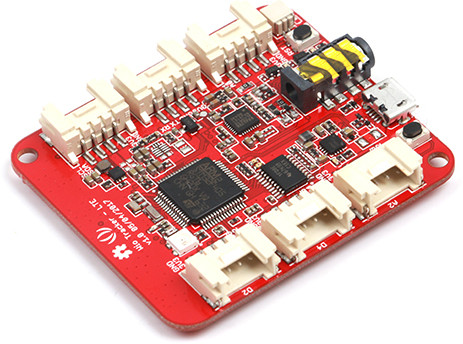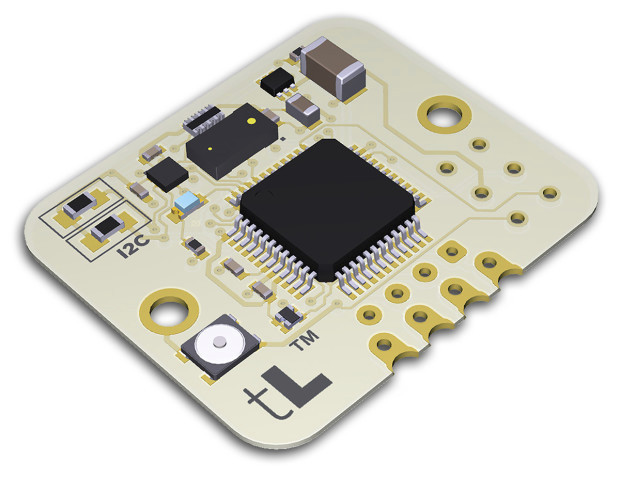STMicroelectronics has announced an upgrade to their STM32L4 series Cortex-M4 micro-controllers with STM32L4+ series upping the maximum frequency from 80 MHz to 120 MHz delivering up to 150 DMIPS (233 ULPMark-CP) , and ultra low power consumption as long as 33 nA in shutdown mode without RTC. The new family also adds Chrom-GRC graphics controller (GFXMMU) that can handle both circular and square TFT LCD displays together with a MIPI DSI interface and displayer controller, making it ideal for wearables, Chrom-ART 2D accelerator for better graphics performance, two Octo SPI interfaces, and more memory (640KB max) and storage (up to 2MB flash). If you want to know all differences between STM32L4 and STM32L4+, and/or learn how to use peripherals, STMicro has setup a nice free STM32L4+ online training page, which allow you to do just that either by downloading PDF documents, or following e-Presentations with slides and audio. STM32L4+ appears […]
Oculus Rift Virtual Reality Development Kit 2 Becomes Open Source Hardware
Oculus Rift DK2 virtual reality headset and development kit started to ship in summer 2014. The DK2 is kind of VR headset that is connected to a more powerful computer via USB and HDMI, includes hardware for positional tracking, a 5″ display ,and two lenses for each eye. Since then the company has been purchased by Facebook, and they’ve now decided to make the headset fully open source hardware. The release includes schematics, board layout, mechanical CAD, artwork, and specifications under a Creative Commons Attribution 4.0 license, as well as firmware under “BSD+PATENT” licenses which you’ll all find on Github. The release is divided into four main folders: Documentation with high-level specifications for the DK2 headset, sensor, and firmware. Cable with schematics and high level specifications for the cables. Custom assembly that would be hard to recreate from source. Allegedly the most complex part of the design Sensor with […]
STMicro BlueNRG-MESH SDK for Bluetooth Mesh to Include Code for Firmware, Android and iOS Apps
Earlier this summer, the Bluetooth SIG announced Bluetooth Mesh, which supports many-to-many (m:m) device communications for up 32,767 unicast addresses per mesh network (in theory), and is compatible with Bluetooth 4.0 or greater hardware. Several companies immediately unveiled Bluetooth Mesh SDK at the time including Qualcomm, Nordic Semi, and Silicon Labs. ST Micro has now unveiled their own BlueNRG-MESH SDK which the company claims is “the market’s only three-part SDK that provides two app developer packages for Android and iOS, and the embedded-development software for building smart objects such as light fittings and sensors”. Sadly, details about the SDK are near inexistent now, except – as one would expect – BlueNRG-MESH SDK will work with ST BlueNRG Bluetooth low energy wireless network processor based on an ARM Cortex M0 core, and corresponding development kits. [Update: STSW-BNRG-Mesh page has many more details about the SDK including the architecture diagram below. ] […]
Arduino MKR WAN 1300 & MKR GSM 1400 Boards Launched with LoRaWAN and 3G Connectivity
Arduino has introduced two new boards right in time for Maker Faire New York: MKR WAN 1300 with a LoRa radio, and MKR GSM 1400 with a “3.75G” cellular module, both software compatible with Arduino Zero, and in Arduino MKRZero board form factor. MKR WAN 1300 Board Arduino MKR WAN 1300 specifications: MCU – Microchip Atmel SAMD21 32-bit ARM Cortex M0+ MCU @ 48 MHz with 32 KB SRAM, 256 KB flash (8KB for bootloader) Digital I/O Pins – 8x digital I/Os, 12x PWM, UART, SPI, and I2C, 8x external interrupts Analog Pins – 7x analog inputs (8/10/12-bit ADC), and 1x analog output (10-bit DAC) DC Current per I/O Pin – 7 mA LPWAN connectivity Murata CMWZ1ZZABZ LoRa module based on Semtech SX1276 and STMicro STM32L Antenna power – 2dB Carrier frequency – 433/868/915 MHz Working regions – EU/US USB – 1x micro USB port for power and programming […]
WizziKit is a DASH7, LoRa and Sigfox Wireless Sensor & Actuator Network Kit
Over the last few years, I’ve written several article about LoRaWAN, Cellular IoT, and Sigfox based long range low power IoT solutions. DASH7 is another LPWAN (Low Power Wide Area Network) standard that operates on the same 868 and 915 MHz ISM bands as LoRa and Sigfox, but has much lower power consumption, and the cost of a shorter range up to 500 meters, instead of the 5+km associated with LoRa or SigFox. The DASH7 Alliance Protocol (D7A) is an Open Standard, and if you want more details you can download version 1.1 of the specifications on DASH7 Alliance website. I’m writing about DASH7 today thanks to an article on ST blog about Wizzilab’s Wizzikit, an evaluation kit and framework for DASH7 with a gateway, and several nodes that can also optionally support LoRaWAN and Sigfox protocols. The kit is comprised of the following items: WizziGate GW2120 Ethernet/Wifi/Dash7 gateway – based […]
Particle E Series is a Family of 2G, 3G, 4G LTE Cellular IoT Modules Optimized for Mass Production
Cellular IoT has really taken off this year from the low cost Orange Pi 2G IoT board to 4G GPS Trackers, and global IoT SIM cards. Particle has been in this market for a couple of years, starting with their Electron boards, and the company has just announced the new Particle E series family of industrialized 2G, 3G, and LTE-enabled modules and a development kit. Key features of Particles E series modules: Cellular Connectivity u-blox SARA modules for cellular connectivity LTE: SARA-R410M 3G: SARA-U201/U260/U270 2G: SARA-G350 (2G) Embedded SIM card, Particle MVNO support in 100+ countries u.FL antenna connector MCU – STM32F205RGT6 120MHz ARM Cortex M3 microcontroller with 1MB flash, 128KB RAM Storage – • Expandable flash memory I/Os – 63-pin surface mountable castellated module with up 30x GPIOs, 12x ADC, 2x DAC, 13x PWM, 3x UART, 2x SPI, 1x I2S, 2x CAN, 1x USB 2.0 (Some signals are multiplexed) […]
Wio LTE GPS Tracker Board Comes with a 4G Modem, Supports Espruino Firmware (JavaScript Programming)
Seeed Studio launched Wio GPS tracker with a 2G GSM module a few months ago, and while it should work in some countries, others are phasing out 2G networks, and only support 3G or 4G. The company has now launched an update with Wio LTE board with the same form factor, and most of the same features except they replaced the 2G/Bluetooth/GNSS module with a 4G LTE/GNSS module, and Atmel SAMD21 ARM Cortex M0+ microcontroller by an STMicro STM32 ARM Cortex-M4F MCU. Wio LTE board specifications: MCU – STMicro STM32F405RG ARM Cortex M4F MCU @ 168 MHz with 1MB flash, 192+4KB SRAM Storage – micro SD slot Connectivity via Quectel EC21-A (America) module LTE Cat.1 modem: FDD LTE: B2/B4/B12 WCDMA: B2/B4/B5 AT Command: 3GPP TS27.007 and enhanced AT Commands Data – LTE-FDD Max 10Mbps(DL) Max 5Mbps (UL) NanoSIM card 2x u.FL antenna connectors GNSS – GPS/BeiDou/GLONASS/Galileo/QZSS with 1x u.FL GNSS […]
TinyLIDAR is a $15 LIDAR MCU Board based on STMicro VL53L0X Time-of-Flight Ranging Sensor (Crowdfunding)
LIDAR (Light Detection and Ranging) technology is used in autonomous car, drones, and some smartphones, in order to get an object position just like RADAR systems, but instead of using radio frequencies, it relies on infrared signals. High speed, long range LIDAR systems can cost several hundred dollars, but if you’d like to experiment with the technology, or your project would work just fine with 60 Hz scanning and a 2 meter range, tinyLIDAR could be a fun board to play with using Arduino compatible boards. TinyLIDAR specifications and features: LIDAR Sensor ST VL53L0X Time-of-Flight (ToF) ranging sensor 940nm laser VCSEL Up to 2 meters range Up to 60 Hz sampling rate even with Arduino UNO board Up to 3% accuracy with mm precision MCU – Unnamed dedicated 32-bit MCU (likely STM32) used to abstract the ST PAL API into simple I2C commands Host Interface – 4-pin I2C header; re-configurable […]


